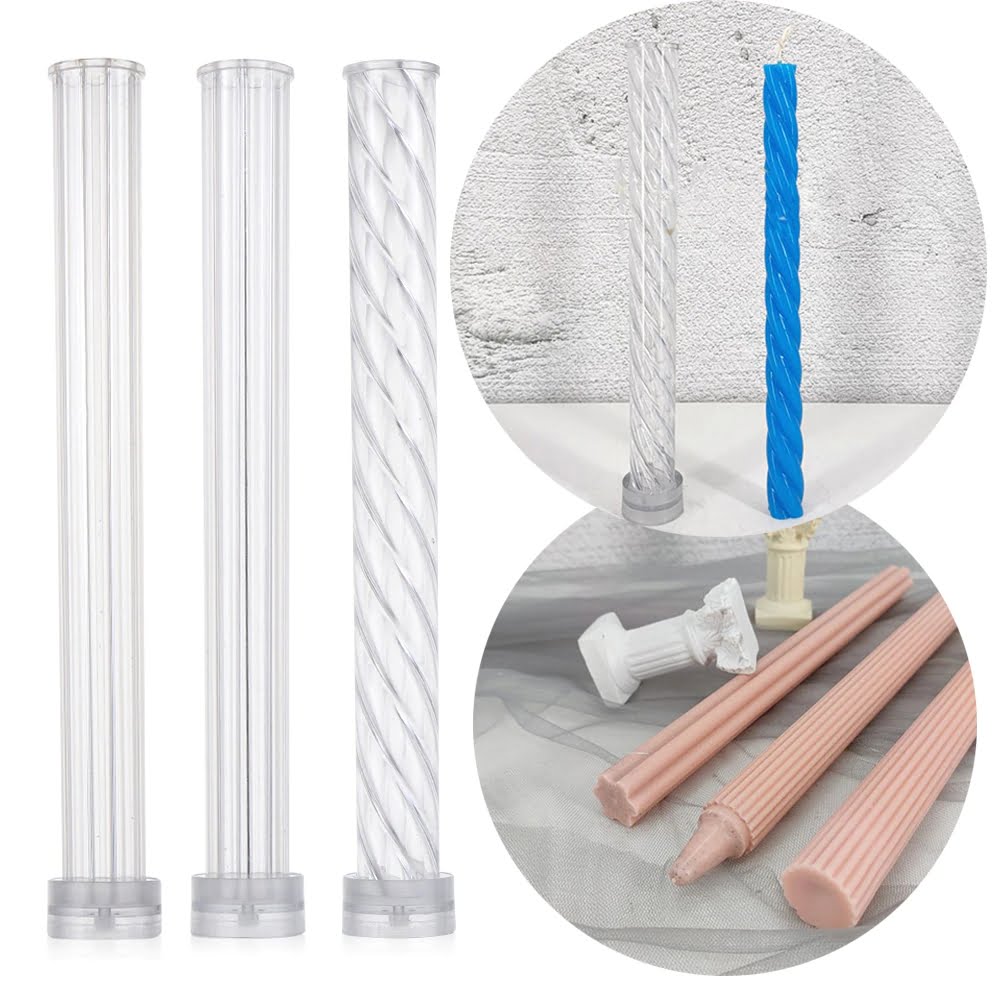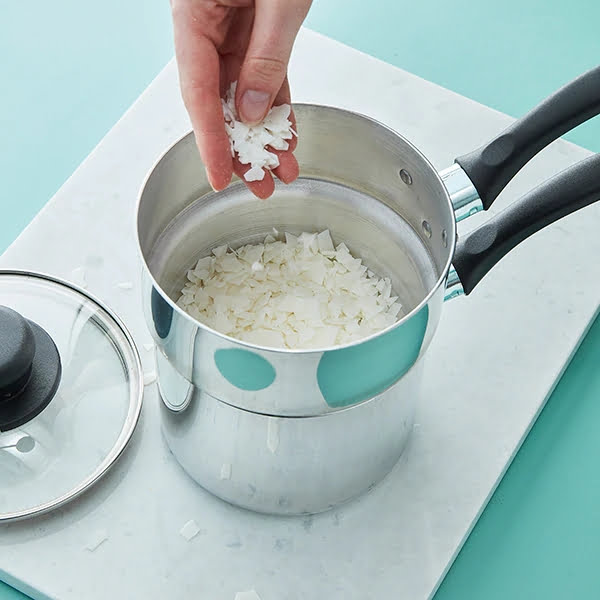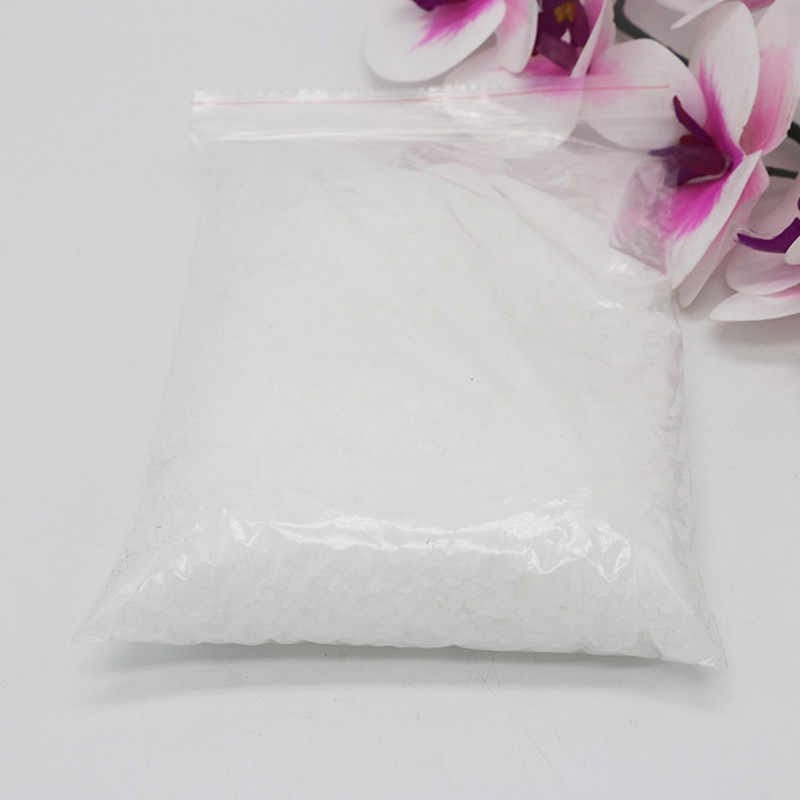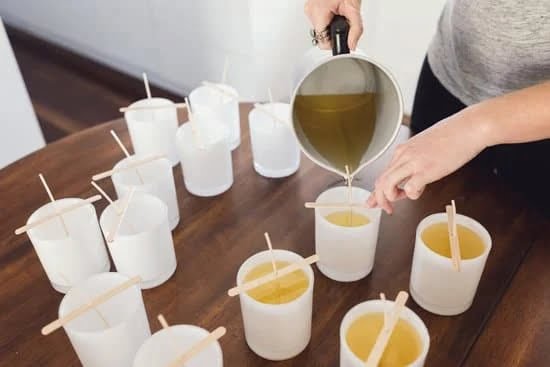Adding fragrance when making candles is an essential aspect of creating a delightful and aromatic experience. The right scent can elevate the ambiance of any room, making it a crucial factor in candle-making. Whether you’re a novice or an experienced candle maker, understanding the various techniques for adding fragrance to your creations can greatly enhance the overall quality of your candles.
In this article, we will explore the importance of fragrance in candles and provide insights into the different methods for infusing captivating scents into your homemade candles. From choosing the right fragrance oils to enhancing scent throw, we’ll cover everything you need to know to create beautifully fragrant candles that provide a truly immersive sensory experience.
Creating scented candles involves more than just melting wax and adding fragrance oils – it requires precision and attention to detail. By following our comprehensive guide, you’ll learn how to properly measure and add fragrance oils, as well as ways to maximize their effectiveness within your candles.
Whether you’re looking to craft unique scents or optimize the longevity of your fragrances, this article will equip you with valuable knowledge to elevate your candle-making expertise. So let’s delve into the art of adding fragrance when making candles and discover how you can indulge in the captivating world of aromatherapy and ambiance enhancement.
Choosing the Right Fragrance Oils
When it comes to making candles, selecting the right fragrance oils is essential in creating a beautiful and aromatic end product. Understanding the difference between fragrance oils and essential oils is crucial in the decision-making process.
While essential oils are derived from plant extracts, fragrance oils are synthetic or artificially created scents. Both options have their own benefits, but for candle making, fragrance oils are often preferred due to their wide variety of scents and their ability to hold up well in wax.
When choosing fragrance oils for your candles, it’s important to consider the quality of the oil. Look for reputable suppliers that offer high-quality oils specifically designed for candle making. Additionally, consider the strength of the fragrance as different oils have varying levels of potency. It’s also advisable to read reviews and get recommendations from other candle makers to find scents that best suit your preferences.
Once you’ve identified potential fragrance oils for your candles, it’s time to test them out. Start by obtaining small samples of different scents to see how they perform when used in candles. This allows you to assess their throw and compatibility with your preferred wax type. Taking these steps ensures that you’re choosing the right fragrance oils that will result in long-lasting and pleasing scents for your homemade candles.
- Research reputable suppliers offering high-quality fragrance oils
- Consider the strength and potency of different scent options
- Test small samples of fragrance oils to determine their performance
Measuring Fragrance Oils
When it comes to making candles, adding the right fragrance is essential. The scent of a candle can create a certain ambiance and mood in a room, making it an important aspect of candle-making. In this section, we will delve into the process of measuring fragrance oils for your candles.
Here are some key points to consider when measuring fragrance oils for your candles:
- Understand the Difference: Before you start adding fragrance oils to your candle wax, it’s important to understand the difference between fragrance oils and essential oils. While both can add scent to your candles, fragrance oils are synthetic, while essential oils are extracted from plants.
- Selecting the Right Fragrance Oil: Choosing the right fragrance oil is crucial for achieving the desired scent in your candles. Consider factors such as the type of wax you’re using, the intended use of the candle, and personal preferences. Look for high-quality fragrance oils that are specifically designed for candle-making.
- Accurate Measurements: When adding fragrance oils to your melted wax, precise measurements are key. Use a scale to measure out the correct amount of fragrance oil based on the weight of your wax. Avoid eyeballing or guessing measurements, as this can lead to inconsistent scent throw in your candles.
By following these guidelines on how to add fragrance when making candles and paying close attention to measuring fragrance oils properly, you can ensure that your homemade candles have a captivating aroma that enhances any space.
Adding Fragrance Oils to Candle Wax
When it comes to making candles, adding fragrance oils is a crucial step in creating a delightful and inviting atmosphere. The right fragrance can enhance the mood of any space, making it important to understand how to add fragrance when making candles. Whether you are a beginner or an experienced candle maker, knowing the proper techniques for adding fragrance oils to candle wax is essential for achieving optimal scent throw and long-lasting aroma.
Before adding fragrance oils to your candle wax, it’s important to ensure that you have chosen the right type of fragrance oil for your specific candle-making project. Whether you decide to use fragrance oils or essential oils, each has its own unique characteristics and properties that can affect the final outcome of your scented candles.
When selecting fragrance oils, consider the compatibility with your chosen wax, the intensity of the scent, and any potential interactions with other additives in your candles.
Once you have selected the appropriate fragrance oil for your candles, measuring the right amount is crucial for achieving an optimal scent throw. Different candle sizes require varying amounts of fragrance oils, so it’s important to follow precise measurements based on the recommendations provided by reputable sources or suppliers.
Inaccurate measurements can lead to either an overpowering or weak scent in your candles, affecting their overall quality and performance. Therefore, understanding how to measure fragrance oils accurately is key in achieving desirable results in your scented candle creations.
Mixing and Testing Fragrances
When it comes to making candles, the fragrance is a crucial aspect that can greatly enhance the overall experience of using the candle. Whether you’re making candles for personal use or as a business venture, knowing how to add fragrance when making candles is essential. In this section, we will delve into the process of mixing and testing fragrances to create unique scents for your homemade candles.
Tips for Mixing Different Fragrance Oils
Mixing different fragrance oils can open up a world of possibilities for creating custom scents for your candles. It’s important to start by selecting complimentary scents that work well together. Experiment with various combinations, keeping in mind that some fragrances may overpower others if not properly balanced. Additionally, consider creating a scent profile or using fragrance blending charts to guide you in combining different oils.
Conducting Scent Tests
Before pouring your candles, it’s crucial to conduct scent tests to ensure that the fragrance intensity is at the desired level. One method is to burn a small sample candle and assess the throw of the scent in an average-sized room. This step allows you to make any necessary adjustments before committing to pouring a large batch of candles with a particular fragrance blend.
Ensuring Consistency
When creating unique scents by mixing different fragrance oils, it’s important to maintain consistency across batches. Keeping detailed records of your recipes and measurements can help replicate successful blends and avoid inconsistencies in scent quality. By meticulously documenting your experiments and their outcomes, you can refine your methods and achieve reproducible results in your candle-making endeavors.
Understanding how to mix and test fragrances when making candles is pivotal in delivering high-quality products with captivating scents. With careful experimentation and attention to detail, you can create signature fragrances that set your homemade candles apart from commercial alternatives on the market.
Enhancing Scent Throw
Maximizing Fragrance Throw
To enhance the scent throw of your candles, there are several techniques that can be employed. One effective method is to ensure that the fragrance oils are thoroughly mixed into the melted wax. Proper mixing ensures that the scent is evenly distributed throughout the candle, allowing for a consistent fragrance release when the candle is burned. Additionally, stirring the wax gently and consistently while adding fragrance oils can help in achieving a better scent throw.
Using Fragrance Enhancers
In some cases, utilizing fragrance enhancers may be beneficial in amplifying the scent of your candles. These enhancers are specifically designed to improve the performance of fragrance oils and boost their ability to permeate through the air when the candle is lit. Adding a small amount of enhancer to your wax and fragrance oil mixture can result in a more potent and long-lasting scent throw for your candles.
Tips for Maximizing Scent Throw
Apart from proper mixing and fragrance enhancers, there are additional tips that can aid in maximizing the scent throw of your homemade candles. Placing the candles in smaller rooms or enclosed spaces can help intensify the fragrance as it fills up the room more effectively.
Moreover, using high-quality wicks that encourage an even burn can contribute to a stronger and more consistent release of fragrance. It’s essential to consider these factors when aiming for an enhanced scent throw in your handmade candles.
By employing these techniques and tips, you can elevate the experience of using your homemade candles by ensuring a robust and long-lasting fragrance fill.
Safety Precautions When Adding Fragrance
When adding fragrance to candles, it is crucial to prioritize safety precautions to ensure a safe and enjoyable candle-making process. Working with fragrance oils requires careful handling and attention to detail, as they can be potent substances that may cause skin irritation or allergic reactions if mishandled. Therefore, it is imperative to follow specific safety protocols when incorporating fragrance into your candles.
First and foremost, it is essential to work in a well-ventilated area when adding fragrance oils to your candle wax. Adequate ventilation helps to minimize exposure to potentially harmful fumes and promotes a healthier working environment. Additionally, wearing protective gear such as gloves and goggles can provide an extra layer of defense against accidental skin contact or splashes during the fragrance mixing process.
Furthermore, it is vital to store fragrance oils in a secure and appropriately labeled manner. Keeping them away from heat sources, direct sunlight, and out of reach of children and pets can help prevent accidents and preserve the quality of the oils. Proper storage also extends the shelf life of the fragrance oils, ensuring that they remain effective for future candle-making endeavors.
In addition to these precautions, it is crucial to read and follow the manufacturer’s instructions for each specific fragrance oil used. Different oils may have varying safety recommendations and usage guidelines, so familiarizing yourself with this information beforehand is essential for a safe and successful candle-making experience. By taking these safety measures into account, you can confidently incorporate fragrances into your candles while prioritizing personal well-being and environmental responsibility.
Common Mistakes to Avoid
When it comes to adding fragrance when making candles, there are several common mistakes that can affect the quality and scent throw of your homemade candles. One common mistake is not properly measuring the fragrance oils, which can result in either an overpowering or barely noticeable scent in the finished candle. It is crucial to follow precise measurements to ensure that the fragrance is just right.
Another mistake to avoid is adding fragrance oils to wax that is too hot. Doing so can cause the fragrance to dissipate too quickly, resulting in a candle that lacks a long-lasting scent. It’s important to let the melted wax cool down slightly before adding the fragrance oil, typically between 185-175 degrees Fahrenheit, depending on the specific type of wax being used.
Additionally, one common mistake when making scented candles is using too many different fragrances at once. While it may be tempting to combine multiple scents for a unique aroma, using too many fragrances can create a muddled or unpleasant smell. It’s best to start by mixing and testing small amounts of different fragrances before committing to a larger batch of candles.
| Common Mistakes | How to Avoid |
|---|---|
| Improperly measuring fragrance oils | Follow precise measurements |
| Adding fragrance oils to excessively hot wax | Cool down melted wax before adding oil |
| Using too many different fragrances at once | Mix and test small amounts first |
Conclusion and Final Tips
In conclusion, adding fragrance when making candles is an essential step to create a delightful and inviting atmosphere in any space. Whether you prefer soothing lavender, refreshing citrus, or warm vanilla scents, the process of infusing fragrance into your candles can greatly enhance the overall experience. By following the tips and techniques discussed in this article, you can elevate the quality of your homemade candles and ensure that they emit a long-lasting and pleasing aroma.
When it comes to adding fragrance to candles, choosing the right fragrance oils is crucial. Taking the time to select high-quality oils that complement the desired scent profile of your candles will ultimately impact the final result. Additionally, accurately measuring and mixing the fragrance oils with the candle wax is key to achieving optimal scent throw. By following proper procedures and testing different combinations, you can create unique and captivating scents for your candles.
In addition to these considerations, it’s important to prioritize safety precautions when working with fragrance oils. Proper ventilation and protective gear should be utilized to prevent any potential harm from inhaling or coming into contact with concentrated oils.
By addressing common mistakes and troubleshooting issues related to adding fragrance to candles, you can refine your candle-making skills and consistently produce high-quality products with captivating scents. With these final tips in mind, you can confidently elevate your candle-making process and enjoy the delightful aromas of your creations.
Frequently Asked Questions
How Do You Add Fragrance to Homemade Candles?
Adding fragrance to homemade candles can be done by using fragrance oils specifically designed for candle making. These oils are added to the melted wax before pouring it into the container. The amount of fragrance oil may vary depending on the type of wax and the desired strength of the scent.
What Is the Formula for Adding Fragrance to Candles?
The formula for adding fragrance to candles is usually based on the volume of wax being used. Typically, the recommended ratio is about 1 ounce of fragrance oil per 1 pound of wax. However, this can be adjusted according to personal preference and the type of wax being used.
How Do You Make Homemade Candles Smell Stronger?
To make homemade candles smell stronger, there are a few techniques that can be used. One method is to use a higher concentration of fragrance oil when making the candle.
Another option is to let the candle cure for a longer period, as this allows the scent to distribute more evenly throughout the wax. Additionally, choosing a container with a narrower opening can help trap and intensify the fragrance when the candle is burning.

Welcome to my candle making blog! In this blog, I will be sharing my tips and tricks for making candles. I will also be sharing some of my favorite recipes.





